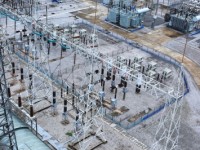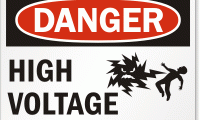Two North East companies have been fined by the Health and Safety Executive (HSE) after workers were exposed to danger of electrocution when a digger struck an underground cable.
Newcastle Magistrates’ Court was told that the cable strike occurred on 19 March 2013 during civil engineering groundworks that were sub-contracted. On the day of the incident two workers were asked to excavate the area in front of a newly-built electric substation for the installation of drainage.
During the work the bucket of an excavator came into contact with a 20kV underground electric cable. The contracting company was responsible for the provision of a services diagram that included the location of underground electric cables, and was also responsible for keeping it updated.
However, it failed to update this diagram following the earlier construction of the substation and re-routing of the electric cables. The court heard that although it was the its duty to provide the contractor with appropriate information regarding the location of electric cables, the contractor equally had a duty to provide workers under its control with the information they needed. Instead, it accepted the out-of-date services diagram, even though it knew there had been changes made in the area to be excavated.
The company was fined £8,000 and ordered to pay £578.90 costs after pleading guilty to breaching regulation 22(1)(a) of the Construction (Design and Management) Regulations 2007. The contractor was fined £4,000 and ordered to pay £761.60 costs after pleading guilty to breaching regulation 13(2) of the Construction (Design and Management) Regulations 2007.
After the case, HSE Inspector Andrea Robbins said the companies should have adequately planned and managed the risks arising from contact with live underground cables before the excavation work started, for example isolation of the services, provision of up-to-date and accurate information on the location of the underground services, then the incident would have most probably been avoided.
She said: “The construction industry needs to be more aware of the dangers of working in the vicinity of live underground services. Appropriate planning and control measures should always be in place. A failure to do so could result in inadvertent contact with the live cables, the consequences of which can be fatal.”
(Image courtesy of antpkr / FreeDigitalPhotos.net)









There was also a case in 2010 when the tip of a ground breaker pierced an 11kV cable, leaving the worker with severe burns to his face, arms and neck. Luckily the incident wasn’t fatal.
It all backs up what Andrea Robbins from the HSE says, more awareness of the dangers of working near electrified underground cables is needed. Proper planning is vital and schematics should be provided to identify where the cables lie.
Failing this, methods such as traceable warning tape or concrete cable tiles should be used as a last line of defence against a possibly fatal accident.